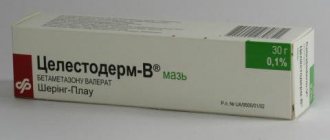Write a review
Reviews: 0
Manufacturers: Purac Biochem, Danisco A/S
Active ingredients
- Lactitol
Disease class
- Constipation
Clinical and pharmacological group
- Not indicated. See instructions
Pharmacological action
- Laxative
Pharmacological group
- Laxatives
Powder substance Lactitol monohydrate
Instructions for medical use of the drug
Description of pharmacological action
Laxative and hippoammonemic agent. In the large intestine, lactitol is broken down by the intestinal flora into low-molecular organic acids that increase osmotic pressure, which helps to increase the volume of feces, soften them, and facilitate the act of defecation. The laxative effect occurs within 24 hours after use or on the 2-3rd day (due to the passage of the drug through the gastrointestinal tract). In hepatic encephalopathy or hepatic coma (or precoma), the effect is achieved through the transport of ammonia from the blood to the large intestine (due to a decrease in pH, an increase in osmotic pressure in the intestinal lumen) and the removal of ammonium ions and other nitrogen-containing toxic substances from the colon. In addition, it inhibits proteolytic bacteria and increases the number of acidophilic bacteria.
Indications for use
Constipation, stool regulation (including with hemorrhoids, preparation for operations and after operations on the rectum, anal sphincter and the adjacent area). Hepatic encephalopathy, hepatic coma and precoma, hyperammonemia.
Release form
powder substance; two-layer polyethylene bag (bag) 20 kg paper bag (bag) 1; powder substance;
Pharmacokinetics
Absorption – 0.5-2% of the dose taken.
Contraindications for use
Galactosemia, intestinal obstruction, suspicion of organic damage to the gastrointestinal tract, abdominal pain, rectal bleeding of unknown origin, children under 1 year of age, hypersensitivity to lactitol.
Side effects
From the digestive system: discomfort in the abdomen, flatulence. From the metabolic side: with long-term use in high doses in the treatment of hepatic encephalopathy - electrolyte imbalance.
Directions for use and doses
Take orally during meals, mixing with various drinks (water, tea, coffee, juices, etc.) or liquid food, 1 time/day. Constipation: children 1-6 years old - 2.5-5 g/day, 6-12 years old - 5-10 g/day, 12-16 years old - 10-20 g/day; adults - 20 g/day. Lactitol should induce stool once a day. After the onset of a stable laxative effect within several days of treatment, the dose can be reduced. For hepatic encephalopathy, hepatic precoma and coma, hyperammonemia, the dose is set individually: the initial daily dose is 500-700 mg/kg in 3 divided doses. The selected dose should cause two bowel movements per day.
Interactions with other drugs
When taken concomitantly with enteric pH-dependent release drugs, it should be taken into account that lactitol reduces intestinal pH.
Special instructions for use
It has low calorie content (2 kcal/g) and does not affect blood glucose levels. During treatment, increased fluid intake is desirable.
Storage conditions
In a dry place, protected from light.
Best before date
48 months
ATX classification:
A Digestive tract and metabolism
A06 Laxatives
A06A Laxatives
A06AD Laxatives with osmotic properties
A06AD12 Lactilol
Lactitol
International name of the medicinal substance:
Lactitol The list of drugs containing the active substance Lactitol is given after the description.
Pharmacological action:
In the large intestine, under the influence of intestinal flora, it is broken down into low-molecular organic acids that increase osmotic pressure, which helps to increase the volume of feces, soften them, and facilitate the act of defecation.
The laxative effect occurs within 24 hours after use or on the 2-3rd day (due to the passage of the drug through the gastrointestinal tract). In patients with hepatic encephalopathy or hepatic coma (or precoma), the effect is achieved through the transport of ammonia from the blood to the large intestine (due to a decrease in pH, an increase in osmotic pressure in the intestinal lumen) and the removal of ammonium ions and other nitrogen-containing toxic substances from the colon. In addition, the drug inhibits proteolytic bacteria and increases the number of acidophilic bacteria. Pharmacokinetics:
Absorption - 0.5-2% of the dose taken.
Indications:
Constipation, stool regulation (including for hemorrhoids, preparation for operations and after operations on the rectum, anal sphincter and adjacent area).
Hepatic encephalopathy, hepatic coma and precoma, hyperammonemia. Contraindications:
Hypersensitivity, galactosemia, intestinal obstruction, suspected organic damage to the gastrointestinal tract, abdominal pain and rectal bleeding of unknown origin, childhood (up to 1 year).
Side effects:
Abdominal discomfort, flatulence, electrolyte imbalance (when using long-term high doses in the treatment of hepatic encephalopathy).
Interaction:
When taken concomitantly with enteric pH-dependent release drugs, it should be taken into account that lactitol reduces intestinal pH.
The interval between taking other drugs is at least 2 hours. Special instructions:
It has a low calorie content (2 kcal/g) and does not affect the concentration of glucose in the blood.
During treatment, increased fluid intake is desirable. Preparations containing the active ingredient Lactitol:
Importal N, Exportal
The information provided in this section is intended for medical and pharmaceutical professionals and should not be used for self-medication. The information is provided for informational purposes only and cannot be considered official.
Similar drugs:
- Duphalac Syrup
- Vaseline oil Substance-liquid
- Senade Tablets
- Magnesium sulfate Powder for oral suspension
- Magnesium sulfate Substance-powder
- Senna Tablets
- Forlax Powder for oral solution
- Enema Rectal solution
- Glycerin Solution for local and external use
- Lactulose Substance-liquid
** The Drug Directory is intended for informational purposes only. For more complete information, please refer to the manufacturer's instructions. Do not self-medicate; Before starting to use the drug Lactitol monohydrate, you should consult a doctor. EUROLAB is not responsible for the consequences caused by the use of information posted on the portal. Any information on the site does not replace medical advice and cannot serve as a guarantee of the positive effect of the drug.
Are you interested in the drug Lactitol monohydrate? Do you want to know more detailed information or do you need a doctor's examination? Or do you need an inspection? You can make an appointment with a doctor - the Euro lab is always at your service! The best doctors will examine you, advise you, provide the necessary assistance and make a diagnosis. You can also call a doctor at home . Euro lab clinic is open for you around the clock.
** Attention! The information presented in this medication guide is intended for medical professionals and should not be used as a basis for self-medication. The description of the drug Lactitol monohydrate is provided for informational purposes and is not intended for prescribing treatment without the participation of a doctor. Patients need to consult a specialist!
If you are interested in any other drugs and medications, their descriptions and instructions for use, information about the composition and form of release, indications for use and side effects, methods of use, prices and reviews of drugs, or you have any other questions and suggestions - write to us, we will definitely try to help you.
Lactitol
Lactitol
(lat.
lactitol
), synonym
lactit
(lat.
lacty
) is an osmotic laxative.
Lactitol is a chemical compound
Lactitol is a synthetic hydrocarbon alcohol produced from the milk sugar lactose, obtained from whey (milk). The empirical formula of lactitol is C12H26O11. Molar mass 362.33 mol-1. The melting point of lactitol is 146 °C. The systematic name of lactitol is 4-O-alpha-D-galactopyranosyl-D-glucitol. Lactitol is an odorless white crystalline substance, highly soluble in water. Lactitol belongs to the class of oligosaccharides, a subclass of disaccharides: its molecule consists of galactose and fructose residues.
Lactitol is a medicine
Lactitol is the international nonproprietary name of the drug. According to the pharmacological index, lactitol belongs to the group “Laxatives”. According to ATC, it belongs to the group “Osmotic laxatives” and has code A06AD12. According to the mechanism of action, lactitol is similar to lactulose; both of them differ from other osmotic laxatives in that it is not the active substance of these drugs itself, lactitol, that has osmotic properties, but the products of its metabolism in the colon by certain types of bacteria that break down sugars into acetic, propionic and butyric acids. In the small intestine, lactitol does not undergo significant enzymatic breakdown and is not absorbed. After entering the large intestine, lactitol is broken down by the microflora present in it with the formation of short-chain fatty acids, carbon dioxide and water, as a result of which the volume and contents of the intestine and the osmotic pressure in the intestine increases, the contents soften, the amount of beneficial microflora for which lactitol is a nutrient medium, increases. All this has a positive effect on bowel movements. Lactitol, compared to macrogol, has higher clinical efficacy in the treatment of chronic constipation in elderly and senile patients, fewer side effects and a faster response to therapy. This is due to a more pronounced effect on the motor activity of the colon, confirmed by the results of the “carbolene test” and electrogastroenterography data, as well as the normalization of the disturbed intestinal ecosystem, which was expressed by more significant changes in the concentration and qualitative composition of short-chain fatty acids, which are metabolites of the obligate microflora of the colon ( Minushkin O.N. and others).
The mechanism of the laxative action of lactitol (M.D. Ardatskaya and others)
Indications for taking lactitol
- constipation
- regulation of stool in case of hemorrhoids, in preparation for operations and after operations on the rectum, anal sphincters, perineum and in other situations
- hepatic encephalopathy
- hepatic coma and precoma
- hyperammonemia
Pizensy
02/12/2020 The Food and Drug Administration (FDA), USA, approved the drug Pizensy from Braintree Laboratories Inc., USA, which has a single active ingredient - lactitol, for the treatment of chronic idiopathic constipation (constipation of unknown origin). Pizensy is available as a powder for oral solution in three variants: single-dose packages containing 10 g of lactitol each and multi-dose bottles of 280 and 560 g of lactitol.
The recommended daily dose for adults is a solution of 20 g of lactitol once a day, preferably with meals. With constant loose stools, the daily dose is reduced to 10 g.
Lactitol - prebiotic
Lactitol is a prebiotic, that is, it:
- is not broken down by digestive enzymes and is not absorbed in the stomach and small intestine and reaches the colon unchanged
- selectively stimulates the growth and development of colon microflora - bifidobacteria, lactobacilli and similar ones.
Articles for healthcare professionals addressing the use of lactitol in the treatment of gastrointestinal diseases
- Minushkin O.N., Ardatskaya M.D., Voskoboynikova I.V., Kolkhir V.K. Exportal (Lactitol) is an effective and safe osmotic laxative // RZHGGK. - 2010. - T.20. - No. 5. - Adj. No. 36. — P. 118.
- Ardatskaya M.D., Butorova L.I., Grigorieva Yu.V. et al. Clinical and metabolic effectiveness of lactitol in the treatment of chronic constipation (results of the non-interventional prospective observational program “Osmoaid”). Experimental and Clinical Gastroenterology 2018;150(2):149–160.
On the website GastroScan.ru in the “Literature” section there is a subsection “Laxatives”, containing publications for healthcare professionals regarding laxatives and their use.
Trade names of medicines
, in which lactitol is the active ingredient: Importal N (license revoked on April 6, 2015), Exportal, Lactitol monohydrate.
Lactitol has contraindications, side effects and application features; consultation with a specialist is necessary.
Lactitol - food additive
Lactitol is registered as a food additive with the international code E966. Belongs to the group “Anti-flaming agents, glazing additives”. Approved for use as a food additive or for food production in Russia. Lactitol is used primarily as a low-calorie sweetener in baked goods and confectionery products. The calorie content of 100 g of lactitol is 200 Kcal, which is considered a small value for sugar substitutes. Back to section

